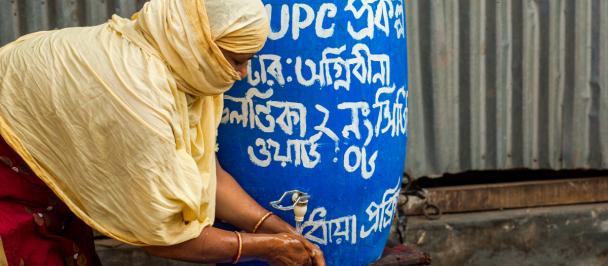Imagine your village is trying to improve its water supply. What would you do? Probably not only invest in better pipes, but also strengthen waste management, raise awareness of sustainable consumption and promote less water-intensive crops.
Today’s complex development challenges require the same tactic: we must address all angles of a problem, and how they are connected, to find sustainable solutions. This systems-approach is at the heart of the 2030 Agenda and its 17 interconnected Sustainable Development Goals (SDGs), covering social, environmental and economic challenges, and the commitment to leave no one on the sidelines of development.
As we approach the four-year mark of the SDGs, the world is grappling with worrying trends. Inequalities are rising. Since 1980 the top one percent of earners have captured twice as much of the global income growth as the poorest 50 percent. Disasters and other climate-related events are increasing in intensity. And the number of forcibly displaced people has reached a record of 68.5 million.
These challenges cannot be dealt with in isolation. They are interconnected, meaning that our solutions must be integrated and boost progress across SDGs, manage potential trade-offs between individual goals, go beyond short-term planning cycles and leverage the creativity and knowhow of all of society. That is why UNDP, with its broad development mandate, has been asked by Member States to act “as the support platform of the United Nations Development System providing an integrator function in support of countries in their efforts to implement the 2030 Agenda”.
What does this mean in practice?
Like the water-insecure village, all those working in development need to identify actions that generate both social, environmental and economic progress to achieve sustainable solutions and transformational change. For UNDP, this means putting our programmes, partnerships and operations at the service of countries, working hand-in-hand with fellow UN agencies to maximize the UN offer and organizing SDG integration around four services that help advance the whole 2030 Agenda.
We will respond to each country’s specific development priorities and needs through integrated policies and programming, making the Goals relevant in all contexts. For example, helping people to get out and stay out of poverty can mean increasing the resilience of livelihoods through climate action in some contexts, but strengthening governance and public institutions in others. Our flexible country support platforms, applied by 46 country offices last year, help bring together social, economic and environmental partners to mobilize collective action and knowledge.
Using SDG metrics, data and analysis, we will help measure development gaps and advancements, for example through the Human Development Index and the Multi-Dimensional Poverty Index, and support countries to fast-track SDG progress through tools such as International Futures and the Climate, Land-Use, Energy and Water Systems.
Building on our country experiences of innovation we are pioneering new ways of ‘doing development’ to rapidly uncover what works and what does not. We are establishing a network of 60 UNDP Accelerator Labs to upscale national SDG implementation with non-traditional partners.
Financing is crucial to reaching the 2030 goalpost, and the resources needed are unprecedented. We will continue to help countries access SDG finance and identify innovative ways to expand both public and private contributions.
Integrated solutions create development gains
UNDP has been working with partners to respond more effectively to complex challenges using an integrated approach.
In Egypt, we are supporting the government, together with UN partners and the OECD, to determine policy choices that bring transformational change and ensure that gains from the economic reform programme are distributed evenly. With the University of Denver we’ve developed future policy scenarios through our modelling tools portfolio and analyzed linkages between SDGs to understand how change in one area affects outcomes in others.
In Honduras, we are using data technologies to zoom in on the deepest pockets of poverty and exclusion, so-called SDG Hotspots. This disaggregated data informs social dialogues with local communities and guides the government and partners as part of a social development programme called Vida Mejor. The same approach is now being used with UNDP and the Government of Malawi to map and visualize multi-dimensional poverty, to help decision-makers improve public services.
These are just a few examples of how we are putting the integrated approach into practice. Additional and accelerated efforts are needed by all to bring the world to the life-changing ‘zeros’ set out in the SDGs, including zero poverty and hunger. UNDP will start to showcase the best integrated solutions and is committed to work with Resident Coordinators and UN country teams who can take lead and show Member States, donors and others that we are on the move, implementing the reform of the UN Development System.

 Locations
Locations

